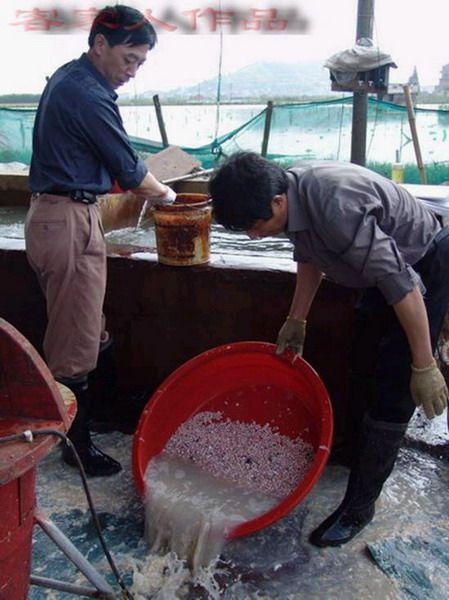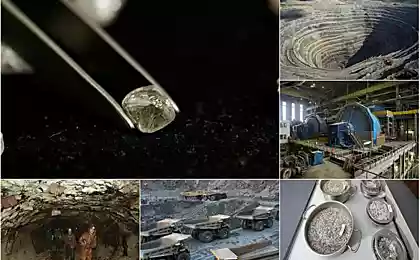868
Pearling (8 photos)
Pearl inside clam shell is formed as a result of getting into the foreign object (grains and others.). Next round predmeta- "seed" is deposited nacreous layer. "In contrast to the structure of the mineral pearls spherulites participates not only mineral, but also the organic substance. Mineral make up pearls never touch each other, always separated organics »

Shine and the play of light on the pearls are due to interference of light on the wavy surface layers of nacre. Usually pearls are white, sometimes pink or cream; there are also yellow, green, black and even blue pearls. Blue pearls are very rare, are of high value and appeal because of a rare, blue, lead-gray hue.

Extraction of sea pearls are primarily located in the Red Sea and the Persian Gulf, as well as off the coast of Sri Lanka and Japan. Freshwater pearls are produced in Germany, Russia, China and North America.
Currently, search is conducted not only natural pearl, but its cultivation on an industrial scale (especially in Japan). Beads placed inside oyster shells of pressed, then returned to the water oysters. After some time, beads coated with layers of nacre are extracted from the oysters.

The easiest way to distinguish a fake from the real pearl - pearl hold on the tooth surface. If the pearls are real - it will squeak.

Cultured pearls have recently been widely used as a popular component for creating jewelry and ornaments with their own hands. Modern technologies allow to create artificial pearls of all sizes, shapes and colors, and the cost of such pearls substantially lower than natural.
History knows many examples of truly gigantic pearls. However, none of them came to our days: pearls do not live more than 150-200 years.





Shine and the play of light on the pearls are due to interference of light on the wavy surface layers of nacre. Usually pearls are white, sometimes pink or cream; there are also yellow, green, black and even blue pearls. Blue pearls are very rare, are of high value and appeal because of a rare, blue, lead-gray hue.

Extraction of sea pearls are primarily located in the Red Sea and the Persian Gulf, as well as off the coast of Sri Lanka and Japan. Freshwater pearls are produced in Germany, Russia, China and North America.
Currently, search is conducted not only natural pearl, but its cultivation on an industrial scale (especially in Japan). Beads placed inside oyster shells of pressed, then returned to the water oysters. After some time, beads coated with layers of nacre are extracted from the oysters.

The easiest way to distinguish a fake from the real pearl - pearl hold on the tooth surface. If the pearls are real - it will squeak.

Cultured pearls have recently been widely used as a popular component for creating jewelry and ornaments with their own hands. Modern technologies allow to create artificial pearls of all sizes, shapes and colors, and the cost of such pearls substantially lower than natural.
History knows many examples of truly gigantic pearls. However, none of them came to our days: pearls do not live more than 150-200 years.



























